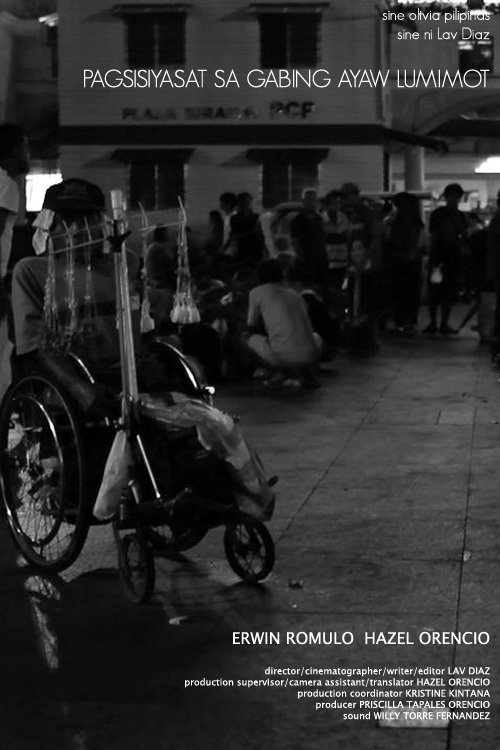 If Elegy to the Visitor from the Revolution was a poetic attempt to tackle the outpouring of grief which followed the murders of film critics Alexis Tioseco and Nika Bohinc, An Investigation On the Night That Won’t Forget (Pagsisiyasat Sa Gabing Ayaw Lumimot) is its mirror image – the somber and naturalistic testimony of one who was left behind, searching for resolution but finding only more questions and ongoing suffering as circumstances conspire to prolong the agony. As usual, Diaz uses the events to comment more widely on the often melancholy history of his country but also on the nature of narrative, time and memory in their necessity for the attempt to create order from a series of otherwise incomprehensible events.
If Elegy to the Visitor from the Revolution was a poetic attempt to tackle the outpouring of grief which followed the murders of film critics Alexis Tioseco and Nika Bohinc, An Investigation On the Night That Won’t Forget (Pagsisiyasat Sa Gabing Ayaw Lumimot) is its mirror image – the somber and naturalistic testimony of one who was left behind, searching for resolution but finding only more questions and ongoing suffering as circumstances conspire to prolong the agony. As usual, Diaz uses the events to comment more widely on the often melancholy history of his country but also on the nature of narrative, time and memory in their necessity for the attempt to create order from a series of otherwise incomprehensible events.
Preceded by a title card reading Part 1: The Cradle of Memory, the central 55 minutes of the film consists of one unbroken static camera shot of a man talking to camera, recounting an incident which he is unable to forget yet cannot remember clearly. The man is Erwin Romulo, editor and best friend of Alexis Tioseco, occupying a chair next to a desk in his own office surrounded by books and papers, records and ephemera of everyday life. Romulo begins to tell the story that night and of its continuing wake alternating between English and Tagalog, gesticulating and fidgeting as his story becomes painful to tell.
At one point Romulo says that he’s glad they’re recording this because it’s already becoming so difficult to remember. Though he speaks uninterrupted for almost an hour (save for a brief moment in which he leaves the chair in search of water), Romulo occasionally goes off on tangents or pauses to explain something else, allowing the events to unfold as he remembers them. The camera becomes a cradle for his memory, a safe place of deposit where his own recollections can rest without fear of change for all eternity. Perfect and incorruptible, cinema stands witness to a time and a place to which it affords a kind of immortality in ever extending moments.
Romulo’s testimony concludes with a lament for the continuing absence of his friend, for the unlived future so cruelly severed by a violent, selfish act. This leads us into the second segment, preceded by a title card reading Part 2: Cradle of the Night. Beginning with a series of ordinary street scenes, the soundscape is soon broken by the reading of a long poem entitled Lullaby of Memory. Culminating with the line “Recollection is the final destination of justice,” the poem emphasises the essential melancholy which colours each of Diaz’s films in its sorrowful fatalism. The images are eventually accompanied by a great river of light as some kind of procession takes place, candles lighting the way as large numbers of people snake onward through the narrow streets. If the lights imply hope the poem seems to reject them as the procession represents a “failure of life” and the poet remarks that she “did not know how this life would fail me”. The lights go out, only to return, their meaning seeming lost and hollow.
Shooting again in low grade black and white, Diaz erases himself from the frame in refusing interaction or reaction to his subject even if there is clearly another human presence to whom Romulo is communicating his tale other than the cold eyes of the camera. Memory is a painful thing but necessary. The camera cannot ease the burden, but it can add to the experience, solidify a narrative which both buries and exposes its essential truths. The night is unending and unforgiving, the investigation may never be concluded. Those who take part in the procession carry a light in front of them but it seems to offer little illumination, the path is endless and leads only to suffering and loneliness.